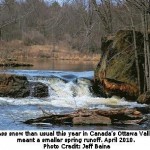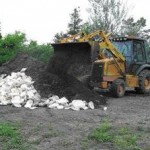In many areas of Ethiopia loss of habitat due to deforestation might pose a more serious threat to the survival of Arabica, although it is now clear that even if a forest area is well protected, climate change alone could lead to extinction in certain locations. The study also identifies populations that require immediate conservation action, including collection and storage at more favourable sites (for example in seed banks and living collections).
What the Experts Say
Aaron Davis, Head of Coffee Research at the Royal Botanic Gardens, Kew, says, “Coffee plays an important role in supporting livelihoods and generating income, and has become part of our modern society and culture. The extinction of Arabica coffee is a startling and worrying prospect. However, the objective of the study was not to provide scaremonger predictions for the demise of Arabica in the wild. The scale of the predictions is certainly cause for concern, but should be seen more as a baseline, from which we can more fully assess what actions are required.”
Tadesse Woldemariam Gole, from the Environment and Coffee Forest Forum in Ethiopia, says, “As part of a future-proofing exercise for the long-term sustainability of Arabica production, it is essential that the reserves established in Ethiopia to conserve Arabica genetic resources are appropriately funded and carefully managed.”

Justin Moat, Head of Spatial Information Science at the Royal Botanic Gardens, Kew, says, “The worst case scenario, as drawn from our analyses, is that wild Arabica could be extinct by 2080. This should alert decision makers to the fragility of the species.
“Our aim is to develop and apply these analyses to other important and threatened plants, on a routine basis. There is an immense amount of information held in museum collections around the world, such as Kew, and we have only just started to unlock their potential for assessing some of society’s most pressing issues.”
The study was co-authored by: Aaron P. Davis (RBG Kew), Susana Baena (RBG Kew), Justin Moat (RBG Kew), and Tadesse Woldemariam Gole (Environment and Coffee Forest Forum), and was published in PLOS ONE on 7 November 2012.
Source: Kew Royal Botanic Gardens.














